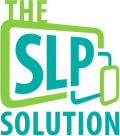AAC and Non-Verbal Therapy Guides
Step-by-Step plans for a variety of skills that often come up when working with children with aren’t speaking yet- Plus, wording for your goals!
What is Task Analysis?
Task analysis is the process of breaking a larger skill down into smaller, sequential steps. With each step that the child masters, he grows closer to being able to perform the full skill independently. Tasks analysis is an evidence-based instructional method which has been found especially effective for children who do not respond to regular instruction, which makes it perfect for the children on our case loads.
While the process of task analysis has been studied and backed by research, there aren’t always agreed-upon ways to break down a skill. Every SLP may have a slightly different method of breaking down skills into step-by-step plans. What’s important is that the steps are achievable and sequential so that the child sees incremental success on the way to learning a new skill.
The following therapy guides represent our task analysis for each skill. You’ll also find sample text for your goals.
Looking for Therapy Activities? Worksheets? Troubleshooting? More Help?
We have more where this came from! Get access to the full SLP Solution Curriculum when you become a member!
Membership Includes…
- Therapy ideas for each step below
- No Prep Worksheets and Therapy Kits
- Troubleshooting Advice
- Access to our staff and community for asking questions
- Monthly webinars for continuing education
Our Step-By-Step Guides:
How to Use:
Click the skill that you’d like to expand. You’ll find our task analysis of the steps you can follow in therapy to teach that skill. You’ll also find sample text to include in your goal writing. To get detailed therapy activities for each step below, please join our membership program to get access to the full SLP Solution Curriculum.
- Use shorter Utterances: Have all adults working with the child speak in utterances that are the same length or one word longer than what the child typically uses.
- Introduce Sign Language: Have all adults that are working with the child begin using some basic signs along with their shortened utterances
- Self Talk: Have all adults that are working with the child use their sign language and shortened utterances to talk about what they’re doing
- Parallel Talk: All adults talk about what the child is doing
- Expansions: Use words to expand upon what the child has said. Add one word to make it more robust. Or, if they child didn’t say anything, provide a one-word label for what he did or what his body language is showing you.
- Receptive Vocabulary Activities: Provide extensive modeling of basic vocabulary words and encourage him to engage with the word receptively.
- Establish joint attention and engagement
- Introduce alternative communication means
- Improve imitation skills: Begin with imitating motor movements if needed and then work your way toward movements with the mouth and speech sounds.
- Replace maladaptive behaviors with functional communication skills
- Parent/teacher training if possible
- Expand functional communication along with receptive and expressive language skills
- Determine if AAC is Appropriate: SLP will conduct a needs assessment to determine if AAC is appropriate for the student
- Select an AAC System to Trial: SLP will determine what type of AAC system would be the most appropriate to begin trials with
- Introduce AAC System: SLP will introduce the AAC system to the child
- Track Data and Determine Appropriateness: SLP will collect data about if the AAC system is helping to meet the child’s communication goals
- Use AAC for Functional Communication: Student will use AAC to communicate functionally in the natural environment with a variety of communication partners
- Use AAC for Expanding Language Use: Student will use AAC to practice and learn new language and communication skills.
What Do I Do in Therapy?
If you’re still not sure what to do in therapy, don’t worry! We have more resources for you! The SLP Solution Curriculum contains detailed descriptions of what you can do in therapy for each of the steps listed above. Join today to get all of the therapy ideas, worksheets, and support!

